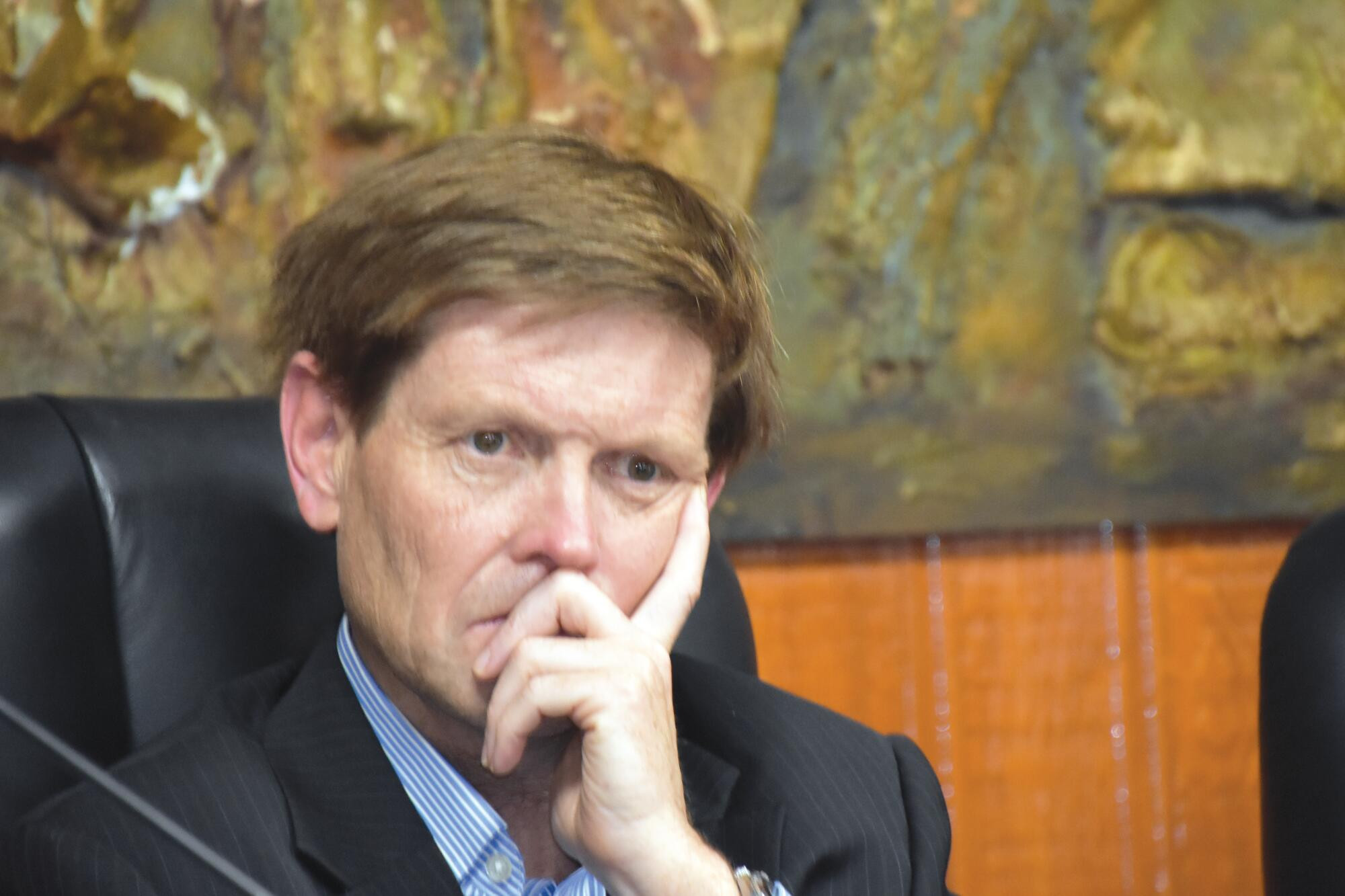General News
2 April, 2025
Underground plan has credibility
Pause VNI West and have an open investigation, writes Bruce Mountain SYNCLINE Energy has publicised their proposal to build underground cables in place of the overhead Western Renewables Link and in place of about half of the Victorian side of the...

Pause VNI West and have an openinvestigation, writes Bruce Mountain
SYNCLINE Energy has publicised their proposal to build underground cables in place of the overhead Western Renewables Link and in place of about half of the Victorian side of the VNI-West overhead line from Kerang to Bulgana.
Is it credible and preferable to the Victorian Government’s highly contested WRL+VNI West proposal?
Syncline Energy claim that their proposed underground direct-current cables will cost about half as much to build, per Megawatt-kilometre, as the Government’s proposal. Syncline plan to bury the cables in the median strip along the Calder Highway from the outskirts of Melbourne to Ravenswood, about 20km south of Bendigo.
From there they will be buried in farmland in getting to the proposed terminal point near Charlton.
Syncline claim to have the support of most of the affected farmers, having narrowed down the route precisely.
Syncline’s claim is transmission capacity at half the cost of construction, less than half the cost of operation, none of the bushfire and extreme weather risk, and a tiny fraction of the social and environmental cost, of the approach that the Government is pursuing. What’s not to like?
Much remains to be discovered. Will new wind and solar farms in western and north-western Victoria be able to access Syncline’s proposed terminal station near Charlton as they had envisaged with the Government’s proposed Bulgana terminal station? Will the median strip of the Calder Highway really be suitable and do affected land-holders really support Syncline, as Syncline says?
Syncline’s CEO states the obvious when he said that his proposal will get no-where without the Australian Energy Market Operator and the Victorian Government’s support.
Afterall without their support, the necessary charges to pay for his project will not be imposed on electricity consumers.
The hope of securing the Victorian Government and AEMO’s support seems to have affected Syncline’s proposal. If their approach is so much better, why is Syncline proposing to terminate at Charlton in Victoria rather than go all the way to the end at Dinawan, deep into New South Wales?
It has been put to me that promises made to the Electrical Trades Union for the labour-intensive work on the transmission towers and overhead lines, explains the Victorian Government’s support for their giant, capital and land intensive VNI-West interconnection with New South Wales. Accordingly, by ending at Charlton, Syncline still leaves enough labour-intensive overhead VNI-West line for the Victorian Government to buy off union opposition, and so for Syncline to secure the Victorian Government’s support. Similarly, by doffing their cap at interconnection, it might be suggested that Syncline hopes to secure AEMO’s support.
If Syncline’s cost and land access claims are to be believed, their underground cable proposition presents very valuable and important information: a much cheaper transmission solution with none of the weather and bushfire risk and a tiny fraction of the social costs of overhead lines, is available. This begs the question: why only the Calder Highway? What about the Hume, Western, South Gippsland and Princes highways? This, surely, is the important implication of their proposal.
A government able to embrace this important insight, and able to work effectively with the various interest groups, particularly affected landholders and local communities, will surely find more success in delivering the energy transition that is desperately needed.
Syncline Energy’s proposals seem to be sufficiently credible as to suggest that an immediate pause on WRL+VNI West to allow an open and transparent investigation involving a properly constituted stakeholder reference group, would be a suitable way to proceed.
If the Government can’t find the will to do this, perhaps the Victorian Parliament might.
Professor Bruce Mountain is director of the Victoria Energy Policy Centre at Victoria University